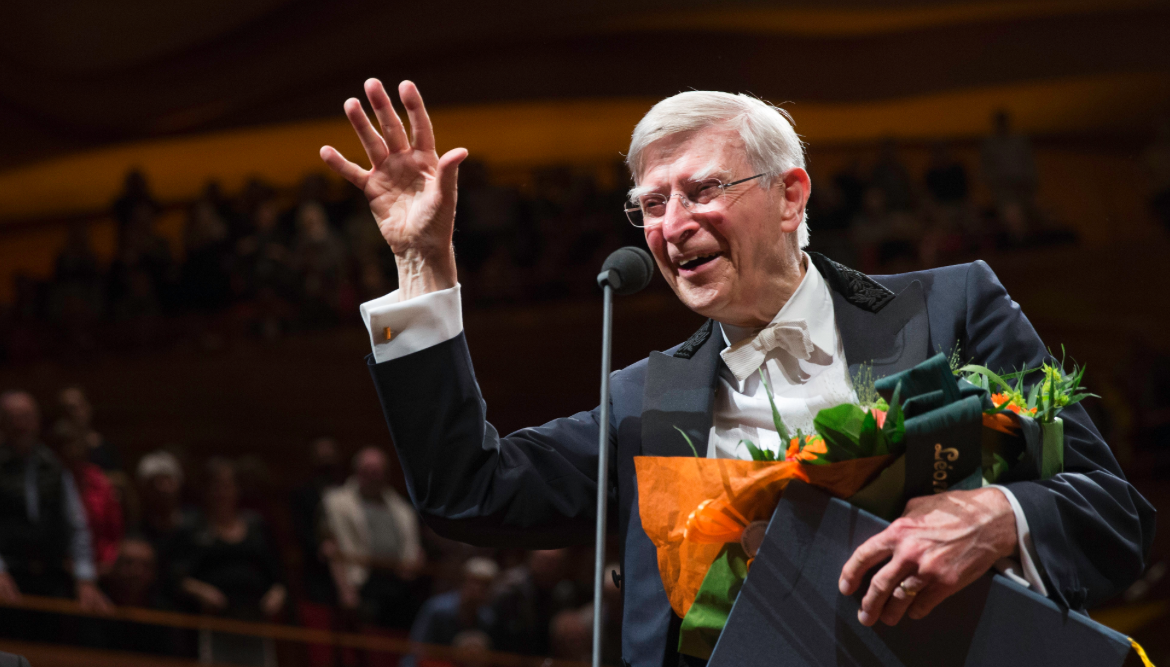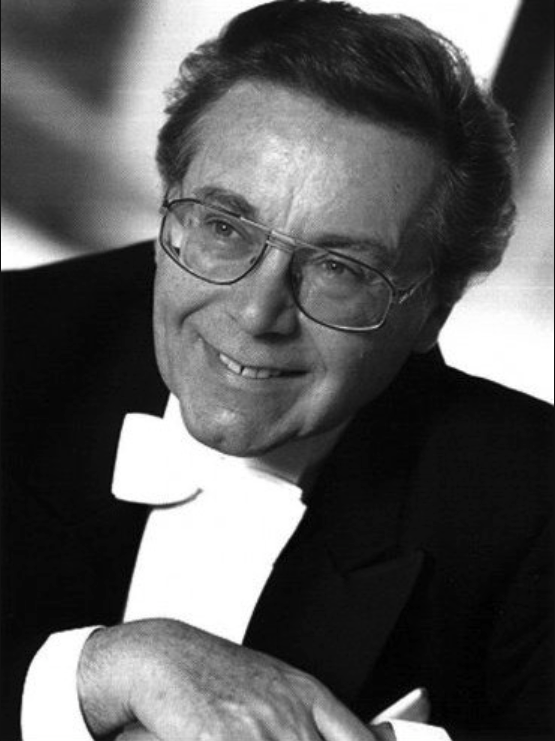léonie sonning music prize 1992
The Hungarian-British conductor Sir Georg Solti received the Léonie Sonning Music Prize of 200,000 kroner with a concert on 24 September 1992 at the Tivoli Concert Hall. The concert was broadcast live on the Danish Broadcasting Corporation’s P2 channel. The corporation also broadcast a TV portrait of Solti on 18 October 1992.
The prize was presented by the Royal Theatre’s Kapellmeister Poul Jørgensen, the Léonie Sonning Music Foundation’s chairman, who in his personal speech included the following words:
‘Dear Sir Georg, you carry with you a great musical tradition, partly in your work as chief conductor in Munich, London, Paris, Chicago and Salzburg, partly, and perhaps above all, through your incredible number of recordings. Perhaps you are not so much the bearer of this tradition as actually the tradition itself. By your intense willpower you leave your mark on the music you conduct and thanks to your deep respect for the will of the composers, we the audience experience a Solti performance as a true Strauss performance, a true Haydn performance, a true Bruckner performance. The entire Danish music scene is indebted to you, and we very much hope to see you here again soon. We congratulate you on your imminent 80th birthday and pay tribute to you as the unique and true artist you are.
citation
The Léonie Sonning Music Prize 1992 is awarded to Sir Georg Solti in recognition of his continuation of a great performance tradition, to which he, by virtue of his strong personality and the deepest respect for the composer’s intentions, has added an intense and magnificent dimension.’
In his speech of thanks, Solti included the following comments:
‘I am very aware of the great honor I have been awarded here. Although I have received many awards, this one is quite special. Allow me to say a few words about something I have in mind. I hear that due to financial problems you have to save money on music and culture, and that would be a big mistake. Preserve this wonderful orchestra! It would be a terrible mistake if anything were to happen to it.’
You can listen to the speech here:
The programme
Haydn Symphony No 104, London
Bruckner Symphony No 3
Participants
The Royal Danish Orchestra
Sir Georg Solti, conductor
Georg Solti in Denmark
Sir Georg Solti had previously given memorable concerts with the Royal Danish Orchestra. Their first together was at the Edinburgh Festival in 1958. In 1982, Solti conducted the orchestra for the first time in Copenhagen, when they performed at the Odd Fellow Palace in a programme that included Mozart’s Symphony No 38 and Dvořák’s Symphony No 9. The concert was broadcast live on radio and television. Politiken’s reviewer described the concert as ‘symphonic playing of the highest order’. In January 1989, Solti returned to the Royal Danish Orchestra to conduct Schubert’s Symphony No 5 and Shostakovich’s Symphony No 8. When he performed at the Tivoli Concert Hall in September of the same year with the Chicago Symphony Orchestra, he told Politiken: “Yes, I will come again to the Royal Danish Orchestra. It is one of the most endearing orchestras in the world.’
The daily press wrote among other things:
The solemn Bruckner was interpreted from an almost pastoral, graceful point of view. There was an enchanting picnic atmosphere right from the first bar. The orchestra showed its nobility and finesse with a breathtaking scent, sound and depth. Magical. Strolling and hovering, the symphony slid forwards through magnificent landscapes, sometimes dramatic but always amenable under the dizzying heights of treetops and sky. Solti’s coup was to find an entirely harmonious balance between solemn fascination and childlike innocence.
(Jan Jacoby, Politiken, 26 September 1992)
He reads the notes with his eyes but conveys them with the personal strength that characterises him as a musician. He forms an opinion, which he then brings to life. This is especially true of Bruckner’s music. Here his ideal is to create a perfect balance with room for the many details that fill Bruckner’s great scores. And there were many details in place from the Royal Danish Orchestra, which lived up to Solti’s sound ideal in the best way. But Solti did not create a sonorous piece that invited the listener inside. The symphony remained an enigmatic mass of sound. Throughout, the performance went beyond the melodies, which were never foregrounded and thus took on new life. One can only admire a conductor who can get the Royal Danish Orchestra to play with such intensity and concentration. And so this evening became a party night, not only for Solti but for the orchestra.
(Steen Chr. Steensen, Berlingske Tidende, 26 September 1992)





